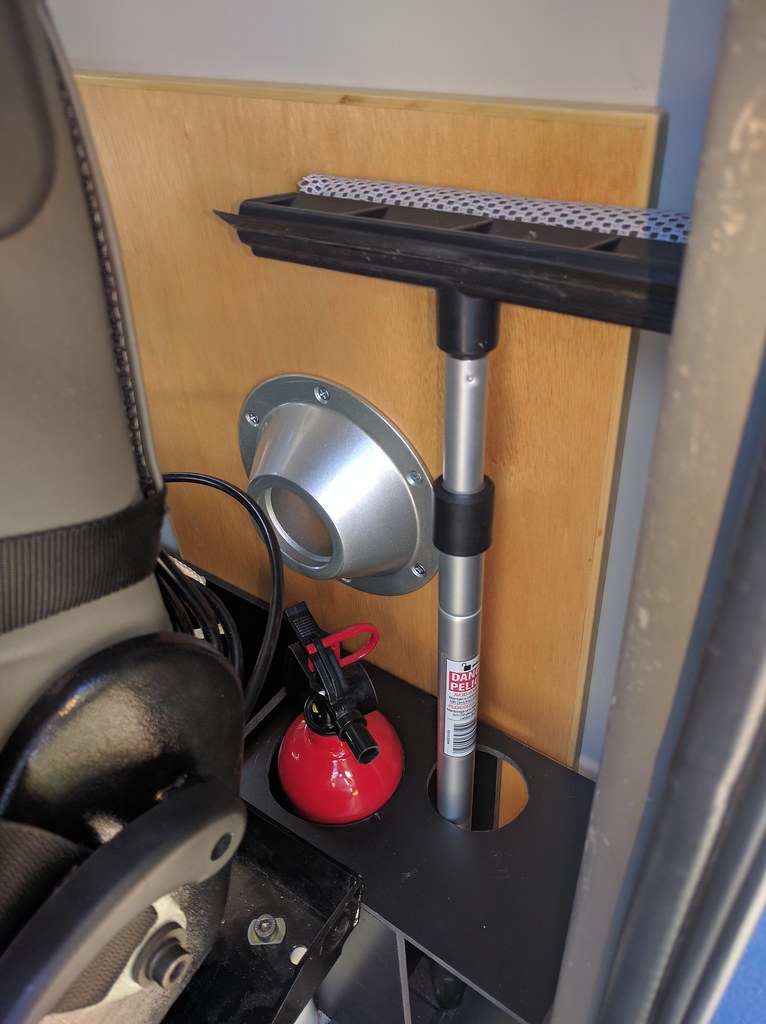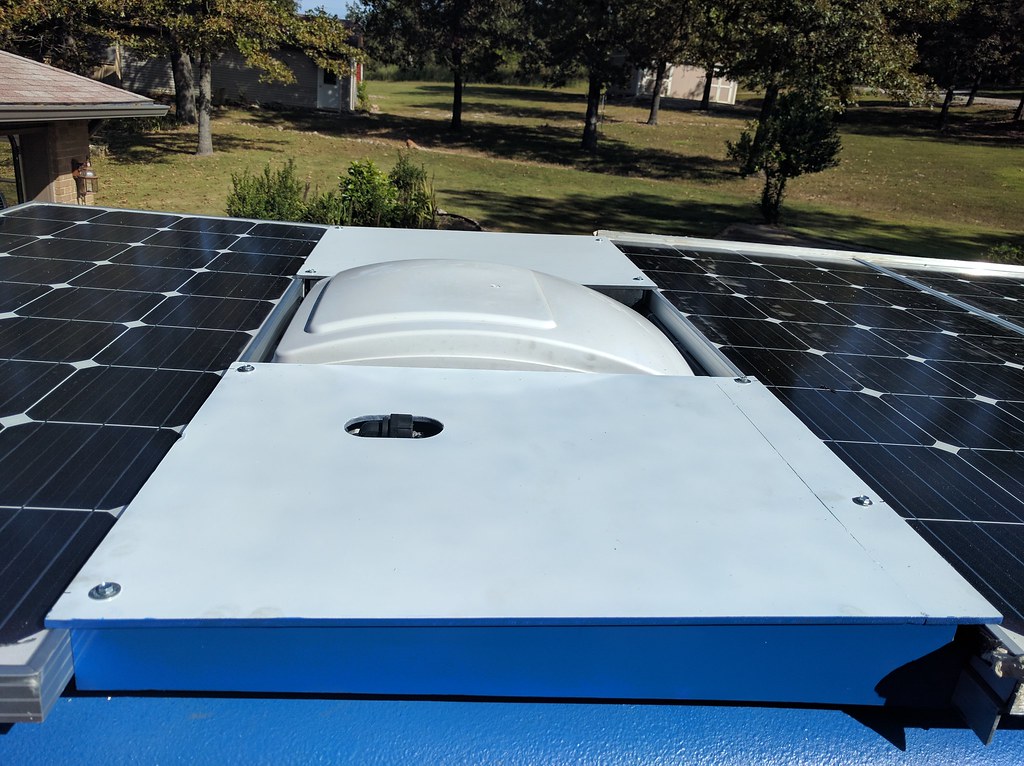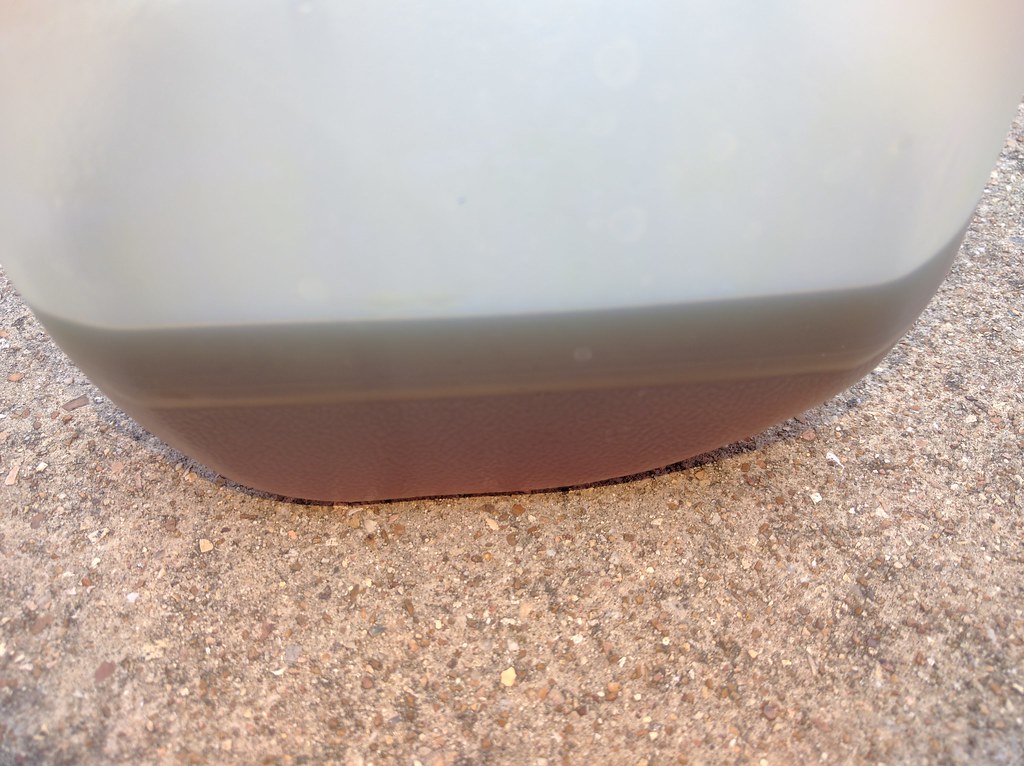Our packing method is to first sort by essential/nonessential, frequency of use, and then group by type. Daily use items are located within arms reach inside the cabin, rarely used items end up sorted inside containers under the bed. Safety and emergency items are kept in clearly marked locations regardless of use frequency. This approach minimizes unpacking, maximizes cargo space, and keeps frustration down. Each container gets marked, and a log of its contents is kept digitally. For critical or emergency items, the list is printed or hand written on the container.
A few random items on the van, they may seem small, but its the details that make the difference.
I used some left over Celtec to make a stowage unit behind the drivers seat. A removable trash container, fire extinguisher, and table leg are stowed here in addition to the forward table top.

Using Celtec again I made 2 fairing panels for the roof. These fill the space between the forward and aft solar panels. Hopefully they will help to reduce turbulence from side winds. This should reduce buffeting of the roof vent, and lower the noise levels.

The celtec was bonded with CA glue (super glue). After working with the Celtec and CA glue combination, I have found it extremely easy, and good to work with. If I had to make cabinets again, I would strongly consider using the Celetc and CA glue combo for many of them.
I have also been finishing some final routine maintenance items. Here is the brake fluid, I suspect it is original to the van. It is definitely past its life expectancy.

No comments:
Post a Comment